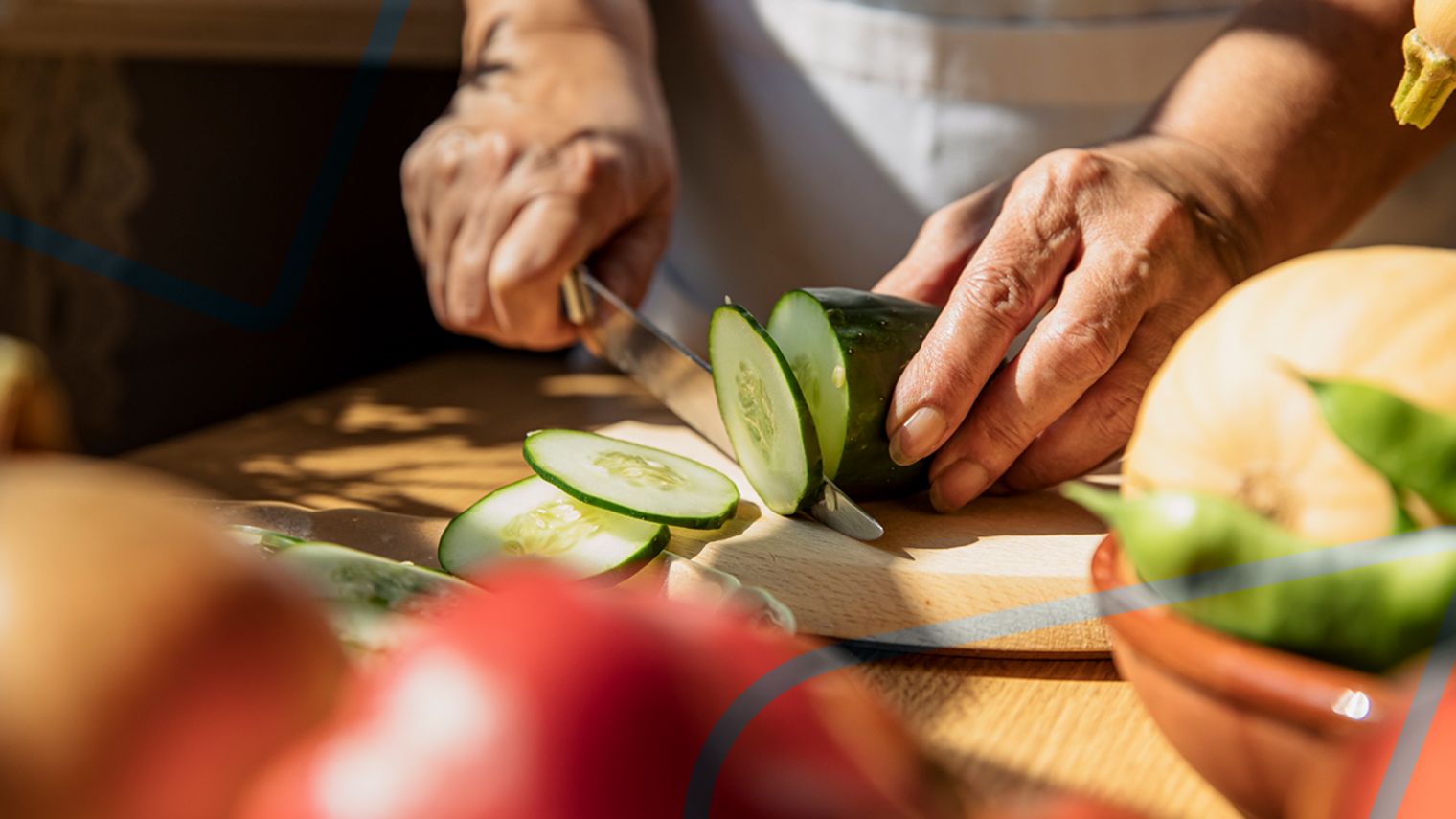How I Balance Having IBS-C and Type 2 Diabetes
March 11, 2024
Content created for the Bezzy community and sponsored by our partners. Learn More

Photography by Westend61/Getty Images
Dealing with multiple conditions can feel overwhelming. Fortunately, many things we do to manage one condition can help with others.
Having a condition like type 2 diabetes can be challenging enough — from figuring out what to eat and how to squeeze in exercise to the need to regularly check blood glucose and find the right combination of medications to keep it in range.
Add other conditions, and life can feel like a constant balancing act.
In addition to type 2 diabetes, I also have migraine, gastroesophageal reflux disease (GERD), and a host of symptoms from dealing with menopause.
One of the more uncomfortable conditions I juggle is IBS-C. Complications from this condition can leave me nauseous, bloated, and suffering from stomach cramps. Being backed up also leads me to feel short of breath.
Fortunately for me, many of the lifestyle factors that have helped me manage my type 2 diabetes also help with IBS-C.


Taking supplements
Sometimes, the medications we take to manage our conditions come with their own set of problems. I had IBS long before type 2 diabetes, which I’ve had for almost two decades. Over the years, I’ve tried many different medications to treat my type 2 diabetes. Currently, I take Mounjaro.
One of the ways Mounjaro works is by slowing down digestion. So, even though it helps with my glucose control, it exacerbates my IBS-C. Initially, I tried counteracting this with yet another prescription. But that didn’t work for me.
What works for me is mixing a daily dose of polyethylene glycol powder, the main ingredient in MiraLAX, into my morning coffee. And when backups get bad, I take a megadose of magnesium citrate before bed.
I take one supplement for IBS-C that helps with both conditions: a daily probiotic. Research published in 2021 found a connection between type 2 diabetes and gut dysbiosis, an imbalance in gut bacteria.
I take a probiotic containing L glutamine and licorice root, which also helps treat my GERD. So it’s a win-win-win.
Avoiding refined carbs
I’m not sure if I’m gluten-intolerant. I’ve tested this theory many times, but I don’t experience anything like the symptoms my gluten-intolerant husband does.
But when we transitioned to a gluten-free household after discovering this was the culprit behind his severe stomach issues, I also discovered my own.
I get backed up whenever I eat wheat products, which often include refined carbs like bread, crackers, cakes, and cookies.
Overindulging in these types of foods also spikes my blood glucose. So avoiding them helps keep my bowels moving and my blood glucose in range.
And fortunately for my diabetes — which often doesn’t come with immediate symptoms — I get an immediate reaction to eating refined carbs. Not only do I get backed up, but that blockage creates gas that irritates my GERD.
These immediate symptoms mean I look at cake, cookies, and pasta as “painful” rather than tasty. Thus, my IBS-C makes it easier to manage my blood glucose by causing me to steer clear of these foods.
Eating plenty of fiber
Fiber helps keep everything moving by both softening and solidifying stools.
Research presented at the American College of Cardiology Middle East Conference in 2019 reported that insoluble fiber helps speed up the movement of stools through your bowels. Meanwhile, soluble fiber helps manage blood glucose by slowing down digestion. Both types support a healthy gut microbiome.
The same foods that are great for managing type 2 diabetes are also full of the types of fiber that help regulate digestion, such as whole fruits and vegetables.
I also work fiber-rich superfoods like chia and ground flaxseeds into my daily diet. I find that eating these daily helps keep me regular. I use them in baked goods like my low sugar homemade muffins.
Additionally, I keep my muffins, cakes, and quick breads gluten-free by subbing in oat flour, which is simply oats ground into a powder. I make this myself in my blender. It can be substituted in place of wheat flour in many recipes.
In addition to being full of fiber, oats also have many other great health benefits, including lowering cholesterol and helping to regulate blood pressure.
Just be careful about adding too much fiber to your diet. I found out the hard way that overdoing it — especially by adding too much too fast — can lead to bloating, gas, and even more constipation.
So start slow, and take the time to figure out the right amount of fiber for you.
Fitting in exercise
Exercise helps relieve my constipation and keeps me active. It’s another key to managing my IBS-C and blood glucose.
Walking is one of my favorite activities, and I can do it while listening to audiobooks or my favorite podcasts. I also enjoy walking in nature, which is said to improve mental health.
Yoga is another favorite activity with multiple benefits — it’s stress-relieving, centering, and relaxing, in addition to helping build muscle strength and flexibility. Plus, it’s a recommended exercise for relieving constipation and helping manage blood glucose.
Many exercises can help manage both of these conditions, so it just takes finding the right ones for you.
The takeaway
Managing a host of conditions can be a lot. But many health-promoting lifestyle factors that work well for one condition can benefit another — like eating a whole-food diet and exercising.
What kinds of activities help you manage both of these conditions? Share in the Bezzy community forums.
Medically reviewed on March 11, 2024
2 Sources


Like the story? React, bookmark, or share below:
Have thoughts or suggestions about this article? Email us at article-feedback@bezzy.com.
About the author